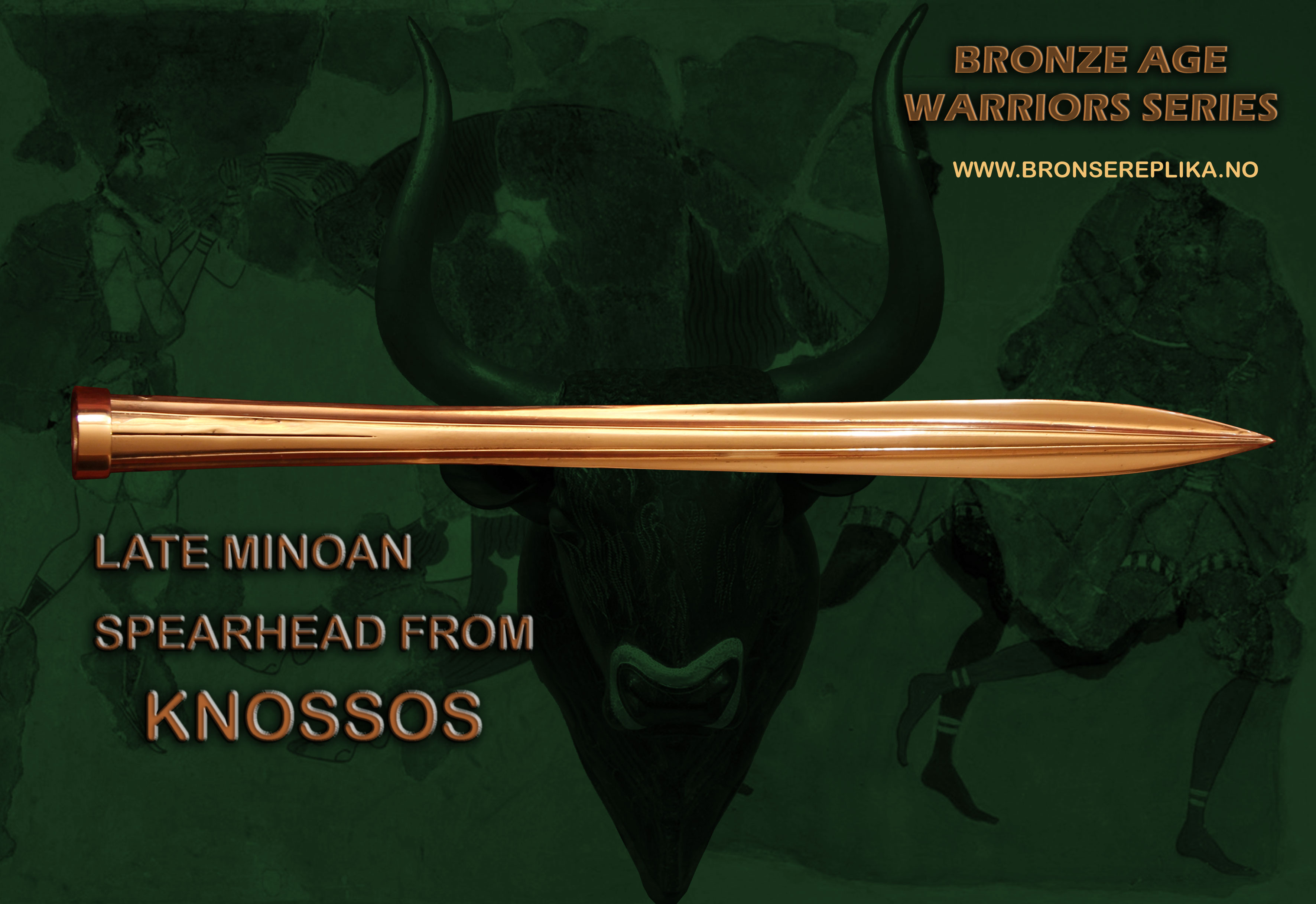
Spearheads in the Late Minoan Warrior-graves
"The arms, and notably the large fighting-spears found in all four of the 'warrior-graves', represent the finest collection of Bronze Age weapons known from Crete, and throw new light on the military equipment of the last phase of the Knossian Empire". This was stated by Hood and de Jong in their presentation of the recently discovered graves at the "Hospital site" at Knossos and a grave from Ayios Ioannis, in the early 50's (Hood & De Jong 1952). The replicated spear was discovered in chamber tomb III, the richest of the burials at the hospital site. All three warrior graves at the site contained large spearheads and short swords of cruciform type (or dagger in tomb III). This seems thus to have been the preferred weapons among the warrior aristocracy at Knossos in the last phase before the collapse.
An increased focus on weaponry and martial aspects, along with appearance of mainland burial types, could be taken as indications of a Mycenaean presence on Crete in the later phases of Minoan culture. The use of Mycenaean mercenaries or that Knossos was taken over by a Mycenaean ruling class, have been suggested (Alberti 2004: 136)
The spearhead from chamber tomb III (as well as tomb V) are of type H, also known as the "Bayonet type". They are long, slim, and have delicate ribs and grooves flowing smoothly from socket to tip. They moreover continues the basic design established in the early Shaft-Graves at Mycenae: a split socket with a separate cast collar or ring to lock the socket in place. Type H is known from Crete, the Greek mainland and Rhodes. The specimens from Knossos are the longest and best executed.
|